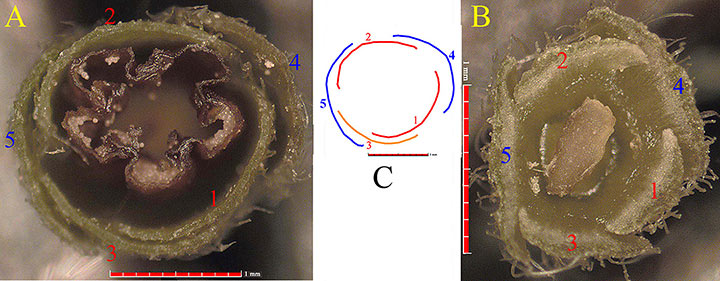
Cross sections of an E. sericeus calyx at midpoint, including corolla (A), and c. 0.5 mm from the base (B),
with quincuncial aestivation sequence indicated and schematized (C) [Hays Co.].
Sepals of Texas Evolvulus taxa
by Bob Harms ( )
)
S. J. van Ooststroom 1934 describes the calyx of Evolvulus (p. 7) as:
The calyx consists of 5 equal or slightly unequal sepals, with quincuncial aestivation. In the majority of species they are lanceolate or narrow lanceolate, sometimes, however, they are broader, then the inner ones often have a scarious margin.
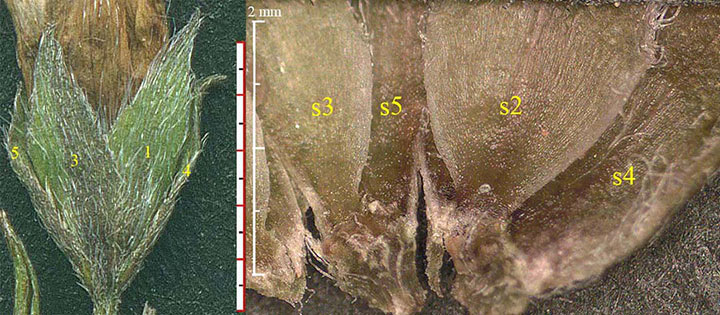
E. sericeus, LEFT: lateral view (s2 not visible); RIGHT: adnate attachment of narrow s2–s3 bases on the receptacle above those of s4–s5.
Definition:
Shield : The lower slightly concave area of the sepal immediately adjacent to the ovary, and with the inner 3 sepals developing a smooth and somewhat brittle membranous margin.
- the innermost sepals (s1, s2), which have a clearly developed membranous margin at the shield;
- the inner sepal s3, with a somewhat reduced margin, which may be absent on the side beneath s5;
- the outer sepals (s4, s5), which lack the membranous margin and generally are pubescent over their entire abaxial surface.
The shield area is generally not visible at anthesis, concealed beneath the outer sepals. Sepals are separate above the very base.
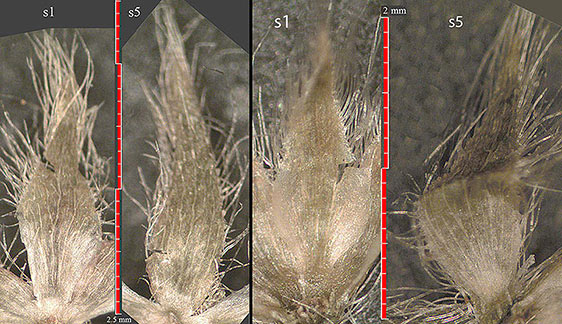
E. alsinoides sepals s1 & s5 (adaxial view; two different specimens from Presidio Co.).
E. alsinoides sepals differ in several respects. The width of the inner sepal margin decreases from S1 to S3, with clear venation in the non-membranous central area; S4 & s5 exhibit veins across their full width. S4 & s5 are slightly longer, but not wider. The inner sepals at the mid point of the shield are typically wider. S1 & S2 are narrower at the point of attachment to the receptacle (ca. 0.25 – 0.28 mm); S3 slightly broader (ca. 0.4); S4 & s5 widest (ca. 0.5 mm).
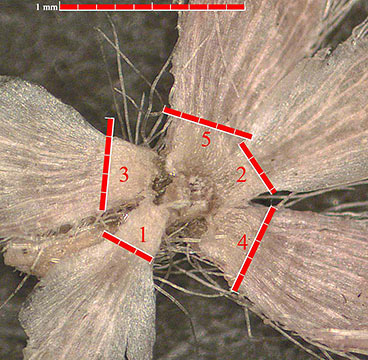
E. alsinoides sepal base attachment (adaxial view; Presidio Co.).
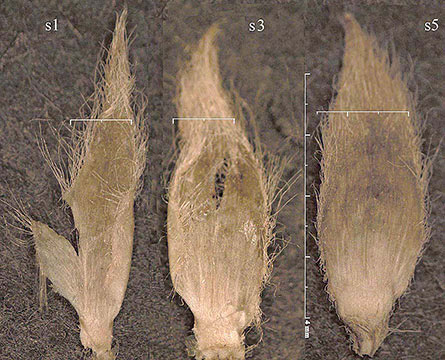
E. discolor s1, s3, s5 (adaxial view; strongly pubescent form; Chihuahua). Scales placed 1/3 down from tip. [Membranes on the right side of s1 and left side of s3 are curved upward here.]
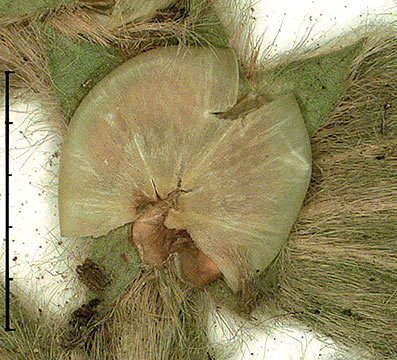
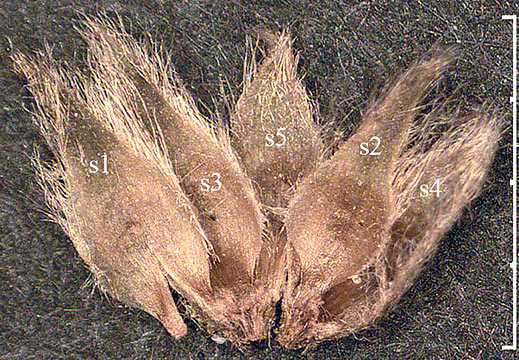
E. discolor sepals (adaxial view; strongly pubescent form; LEFT: Coahuila, RIGHT Jeff Davis Co.).
E. sericeus sepals differ, as illustrated below. S3 lacks the membranous margin on the side beneath s5, often giving an asymmetrical form. The upper third of the inner sepals, especially s1 & s2, is noticeably narrower as is their base, but the sepals do not differ consistently in length. In form the inner set tends to be wider at the shield; the outer, more oblong; both tapering to an acute/acuminate tip. With strongly pubescent E. discolor hairs (not dense) may be present on the exposed areas of the adaxial surface of s4 & s5, to a more limited extent with the inner sepals. The sepals examined from Hays Co. differ from those of E. discolor of Mexico and the Trans-Pecos in their strong midvein, which extends to the tip.
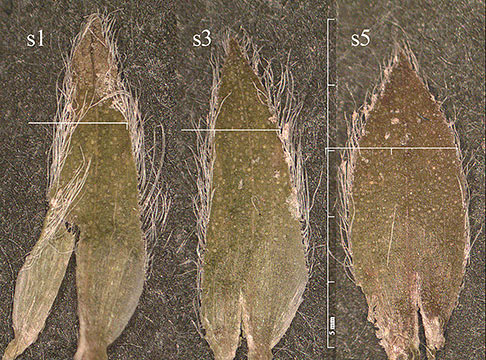
E. sericeus var. cymosus s1, s3, s5 (adaxial view; Hays Co.). Scales placed 1/3 down from tip.
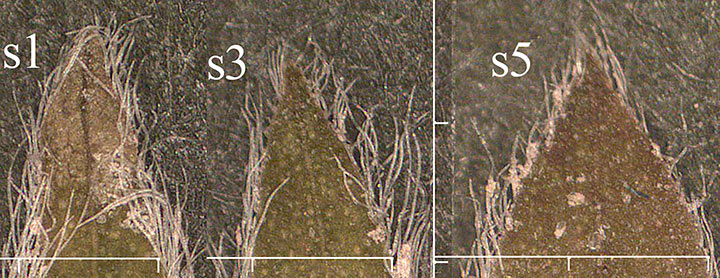
E. sericeus var. cymosus s1, s3, s5 (Hays Co.). Midrib at tip.
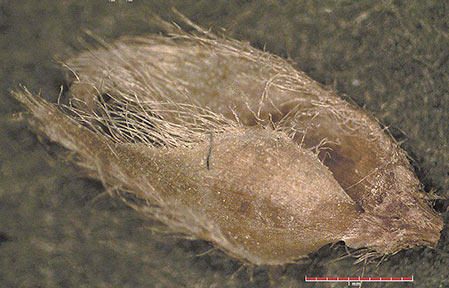
E. discolor s2 & s4 attachment (Jeff Davis Co.).
E. nuttallianus sepal differences are more conspicuous than with E. sericeus, E. discolor and E. alsinoides in the wide membranous margins at the shield of S1, s2 & s3 (asymmetrical as with E. sericeus) by virtue of the very narrow outer sepals as well as the narrow upper portions of the inner sepals. Differences in the upper half are not apparent. The dense pubescence on both surfaces (unlike with E. sericeus) makes measuring differences in size very difficult.
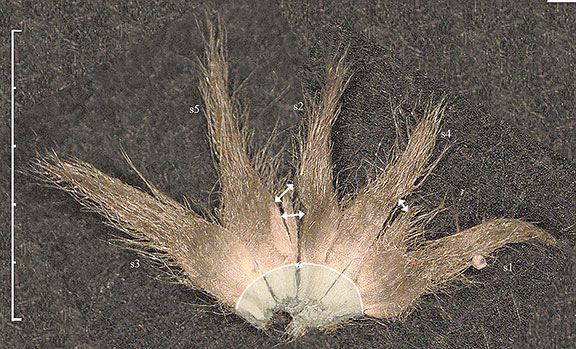
E. Nuttallianus (adaxial view; in fruit; Dallam Co.). [Arrows indicate tears; receptacle shown as pale yellow.]
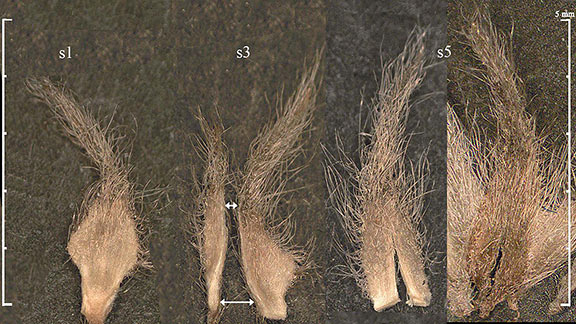
E. Nuttallianus s1, s3, s5 (adaxial views plus abaxial of s5; Garza Co.). [Arrows indicate tears.]
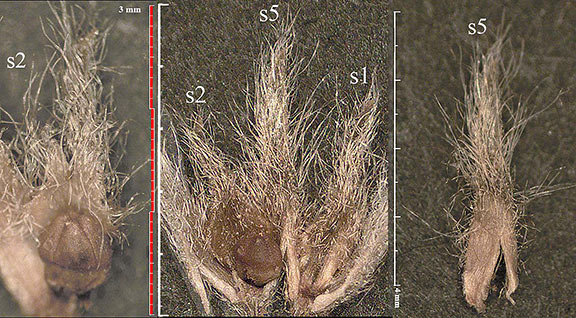
E. Nuttallianus s1, s2 (with ovary), s5 (adaxial views; at anthesis; Garza Co.).
Plant Resources Center Home Page — Flora of Texas
— Evolvulus













